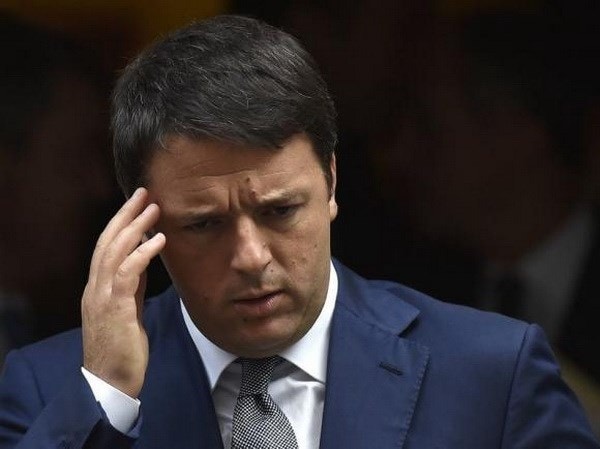Labor market reform makes it difficult for Italian Prime Minister
(Baonghean) - Announced at the end of February after taking office, the labor market reform package is considered a key solution in Prime Minister Matteo Renzi's strategy to help Italy escape the economic crisis. Although it has passed two confidence votes in the House of Representatives, this plan is still facing strong opposition from unions. The difficulties of Italy - the third economy of the Eurozone - are significantly affecting the economic recovery prospects of the old continent.
According to recent statistics, the Italian economy continues to be overshadowed by a prolonged recession, fears of deflation and especially the unemployment rate continues to rise. The Italian state statistics agency - ISTAT said that the unemployment rate in Italy in August remained at a very high level of 12.6%; in which, the unemployment rate among young people reached 42.9%. Previously, surveys in July also by ISTAT showed that on average, more than 1,000 Italians lost their jobs every day, while the number of young people under 25 looking for work reached 705,000 people. This situation also increasingly pushes workers in this country to go abroad to find job opportunities. According to figures recently released by Fondazione Migrantes, a migration organization of the Italian Bishops' Conference, in 2013 more than 94,100 Italians left the country to go abroad to make a living, an increase of 16% compared to the previous year.
 |
| Prime Minister of Italy |
Seeing this reality, the first commitment that Italian Prime Minister Matteo Renzi made in February of this year after taking office was a comprehensive reform strategy, focusing on reforming the labor market, thereby pulling the economy out of recession. Accordingly, the reform package aims to simplify the labor system, eliminate cumbersome procedures related to labor contracts as well as the welfare system for those who are being downsized, which currently exists in Italy. This plan has been called "Job Act" by the domestic media, focusing on 7 areas: culture - tourism - agriculture, "made in Italy" branded goods, high technology, green economy, construction, crafts and social welfare. In particular, there are changes related to contracts between employees and employers. Specifically, employees will have more stable jobs due to stricter regulations forcing employers to ensure employment for employees. The plan is expected to create at least 1 million jobs in Italy by 2015. However, it will certainly not be easy.
In fact, this reform package was a plus point for Prime Minister Renzi before former Prime Minister Enrico Letta, but up to now, this is a huge challenge for the youngest Prime Minister in Italian history to overcome. There was a precedent when former Prime Minister Monti also introduced a series of economic and pension reforms but had to abandon them halfway due to political instability and the ongoing economic crisis. Prime Minister Renzi took over a crisis labor market and controversial budget laws that caused the unemployment rate to continue to rise, even reaching a record 12.9% in March. Meanwhile, finding a good Minister of Economy who agrees with Prime Minister Renzi's ideas is not very easy.
Currently, Prime Minister Renzi's labor market reform project has just been approved at the committee level and must be approved by the National Assembly, including the Senate and the House of Representatives, to become law. But perhaps this roadmap will be a long one as unions have so far strongly opposed it. Meanwhile, some members of Prime Minister Renzi's Democratic Party (PD) are also criticizing many amendments. Specifically, the Italian Parliament is still disagreeing on the provisions related to the regulation protecting workers from unfair dismissal. The fact that the bill has had to be put to a vote of confidence many times also shows a reality that Prime Minister Matteo Renzi is facing, which is the lack of unity among some small parties allied with the ruling Democratic Party. Returning to the underlying cause of the unemployment situation in Italy, it can be seen that the most severe economic crisis in more than two decades and the negative impact of the European public debt crisis have caused this situation. Therefore, all reforms must start from the root, the most important of which are stimulus packages to bring the economy back on track for development.
This is not only a challenge for the government of the new Italian Prime Minister Matteo Renzi, but also a "cornerstone" that many European countries such as the UK, France, Germany, Spain, Portugal... must overcome. Although considered to have improved, the economies of European countries in 2014 are still recovering slowly. Strikes are even at risk of increasing as governments cut wages, subsidies and costs related to workers. Specifically, the union of subway system employees in London, UK said it will continue to strike for 2 days starting October 14; subway system employees in Lisbon, Portugal also announced a 24-hour strike plan scheduled to take place at the end of this month; or pilots of German airline Lufthansa said they will also conduct the 5th strike since the end of August, due to disagreements on retirement policy. Thus, strikes and unemployment will certainly remain the "slow fuse" of the old continent, if the general economic reform roadmap of the region as well as of each individual country is not implemented properly, more strongly and decisively.
Phuong Hoa






